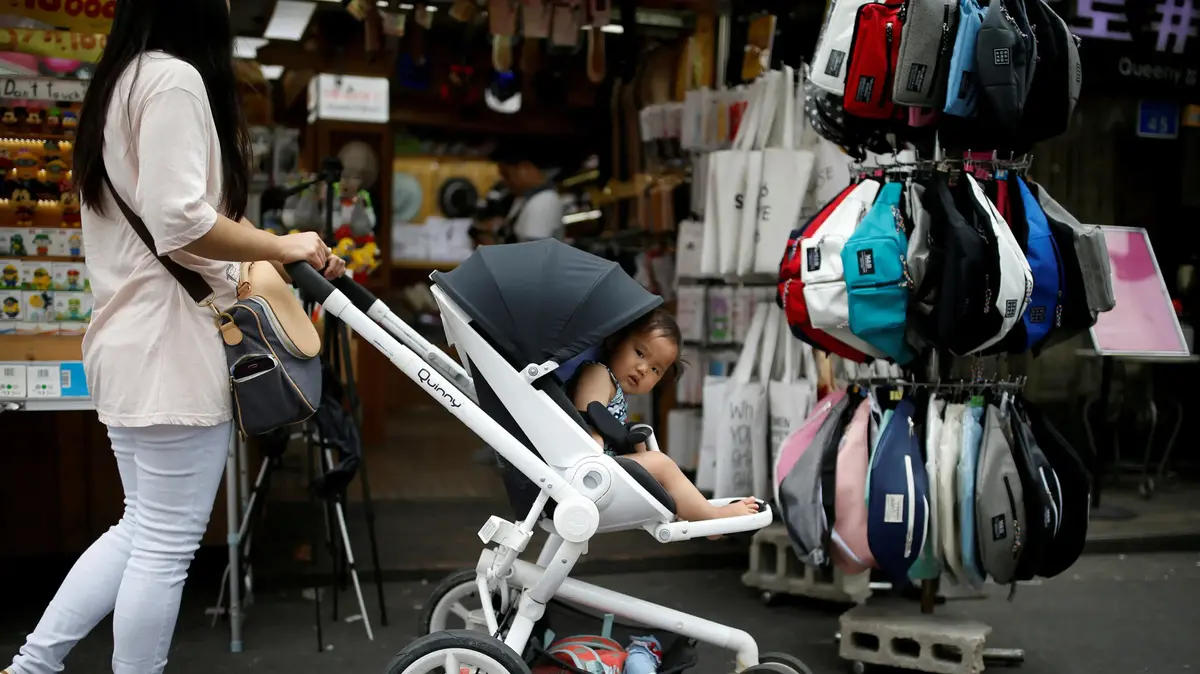Xi Jinping's achievements in China could allow him to rule for life 3:21
Hong Kong (CNN) -
China's birth rate in 2020 hit another record low, and there is no indication that things are going to improve anytime soon.
There were only 8.5 births per 1,000 people in China last year, according to the latest yearbook released by the country's National Bureau of Statistics in late November.
It is the lowest figure not only since records began in 1978, but also since the founding of Communist China in 1949, according to official data.
The birth rate, which has now dropped to single digits, is the latest worrying sign of the worsening demographic crisis in China, as the country of 1.4 billion people begins to lose its youth advantage.
The country's national census, which is conducted once a year, revealed in May that only 12 million babies were born last year, an 18% drop from 14.65 million in 2019.
advertising
China's big factories are on the mend thanks to increased coal supplies
Demographers have long predicted that China will begin to experience a population decline in the coming decades.
However, some experts now worry that it may arrive much earlier than expected.
"According to our preliminary forecast based on provisional data, (in 2021) it is very likely to be around or even below 10 million births," said James Liang, an economics research professor at Beijing University.
"And of course, with that number, the biggest news will be that China is probably in demographic decline."
Liang is not the only expert with that concern.
He Yafu, an independent demographer from Guangzhou, wrote on social media last month that "China's population is very likely to enter negative growth in 2021."
In May, following the results of the national census, He predicted that China's population would start to shrink in 2022. "But now I think my forecast from half a year ago was too optimistic," he wrote.
Based on the most recent data released by China's local governments, He predicts that the number of newborns will be between 9.5 and 10.5 million this year.
Given that in recent years there have been an average of about 10 million deaths annually, "if the number of newborns approaches the lower limit of the prediction, that means that the population is destined to register negative growth," He wrote. .
The decline in the birth rate is a problem facing many countries, but in China the decline has been especially pronounced due to its decades-long one-child policy.
To halt the fall in the birth rate, the Chinese government announced in 2015 that it would allow married couples to have two children.
But, after a brief rebound in 2016, the national birth rate has been falling year after year, prompting authorities to ease the policy further this year to reach three children, although few experts believe that the policy of the three children go to change things.
Furthermore, compared to other industrialized countries with similar fertility rates, China, despite economic growth, continues to lag far behind in terms of GDP per capita and has a relatively weak social welfare system.
Pentagon to build bases in Guam and Australia to meet China's challenge
China's fertility rate last year stood at just 1.3, one of the lowest in the world and even lower than Japan's 1.34.
But China's per capita GDP is only a quarter of Japan's.
The few other countries with a lower fertility rate are Singapore (1.1) and South Korea (0.84).
"Of course, the bad news for China is that this is not the end, and that China will continue to gravitate towards the lower end of the spectrum, so very soon it will become more like Singapore and South Korea," Liang said.
"If you look at the big cities in China, like Shanghai and Beijing, their fertility rate is already the lowest in the world: around 0.7."
Rapid aging of the population and a shrinking workforce could seriously harm China's economic and social stability.
"It will hurt China financially, because you have to keep a lot more older people with fewer young people," Liang said.
"(But) the biggest concern is that China will lose its size advantage, being the largest market for almost everything. It has a very efficient supply chain because of its size. And the innovation capacity may not be as vibrant when it only has half of today's youth. "
An aging society also puts enormous pressure on the country's younger generation, who are already increasingly putting off marriage, or even avoiding it altogether.
Last year, marriage registrations declined for the seventh year in a row, to 8.1 million, a crushing 40% drop from the peak in 2013, according to the yearbook of the National Statistical Office.
For decades, local governments have forced millions of women to abort pregnancies deemed illegal by the state under the one-child policy. Now, they are producing an avalanche of slogans and propaganda policies to encourage couples to have more children. Among the most common incentives are cash grants, property grants, and extended maternity leave.
This year, more than 20 provincial or regional governments have modified their family planning laws, including extending maternity leave for women.
For example, the eastern province of Zhejiang offers 188 days of maternity leave for the third child;
and in the northern province of Shaanxi, women workers can enjoy a total of 350 days of paid leave to have a third child, according to state media reports.
But these policies have not convinced women, who fear they will be further harmed as companies try to avoid the additional financial burden.
"Women will be even more concerned about their careers if they take longer maternity leave, and if the maternity leave is paid by the company," Liang said.
WTA announces immediate suspension of all tennis tournaments in China amid concern over Peng Shuai
At the heart of the matter is the high cost of raising a child, especially among the country's growing middle class.
Parents want their children to be successful, and they are willing to invest all the time and money it costs.
Although some cities have offered cash incentives, Liang said relying solely on local governments is not enough.
Instead, the central government should dedicate a certain percentage of the country's GDP to providing financial subsidies to families, whether in the form of cash payments, tax incentives, or other social security benefits.
Another much-needed policy change is to increase nurseries for young children, Liang said.
Currently, only 5% of Chinese children under the age of 3 use daycare services, and only 20% of those services are run by the government, according to Xinhua.
But there are also more entrenched structural problems that need to be addressed.
High property prices in China and rising costs of education, especially in large cities, have been frequently cited in surveys as the main factors preventing couples from having more children.
Both sectors are in the spotlight this year, with the debt crisis surrounding real estate giant Evergrande and the Chinese government's extensive crackdown on the private education sector.
Although the government has never directly admitted it, its crackdown on after-school classes - which have put enormous pressure on children and an increasing financial burden on parents - is widely perceived by the public as part of a broader effort to boost education. birth rate of the country.
Liang said the measure only "addresses the symptom" and will be difficult to implement in the long term, as people can always find a way to hire a private tutor.
"I think the long-term solution will probably be to change the university access regime," he said, referring to the notoriously tough and competitive exam that millions of Chinese students take each year to enter universities, hoping to ensure a good qualification. future.
These interventionist measures are likely to be the first of many.
After years of inactivity, the government is now well aware of the seriousness of the problem, and has shown great determination to fix it.
Realistically, the most optimistic scenario for China is to have a fertility level similar to Europe, around 1.6 or 1.7, Liang said.
"But that is very difficult. You are talking about spending 5% of GDP (to promote birth rates), or fixing the housing and education problems," he said.
"In fact, just keeping 1.3 is not easy."
China Christmas















